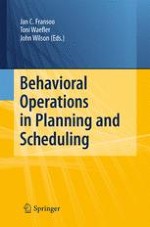2011 | OriginalPaper | Chapter
5. Collaborative Planning in Supply Chains: The Importance of Creating High Quality Relationships
Authors : Hannes Günter, Cees De Snoo, Craig Shepherd, Philip Moscoso, Johann Riedel
Published in: Behavioral Operations in Planning and Scheduling
Publisher: Springer Berlin Heidelberg
Activate our intelligent search to find suitable subject content or patents.
Select sections of text to find matching patents with Artificial Intelligence. powered by
Select sections of text to find additional relevant content using AI-assisted search. powered by
